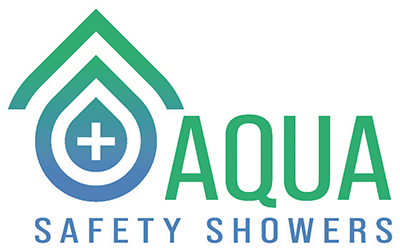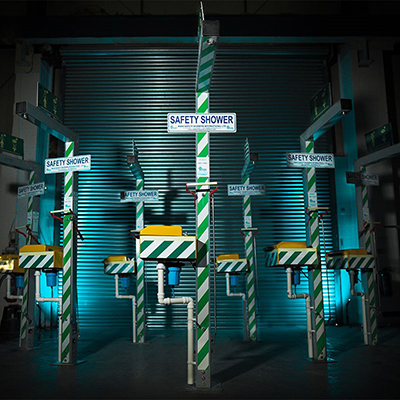A safety shower, also known as an emergency shower, is an essential safety equipment in laboratories, industrial settings, and other environments where exposure to hazardous chemicals or materials is a possibility. It is used to rinse off hazardous substances from the body in case of accidental contact.
 1) Assess the situation:
1) Assess the situation:
- If you come into contact with a hazardous substance or chemical, immediately assess the situation to determine if using the safety shower is necessary. If you have any doubt about your safety, it’s better to use the shower as a precaution.
2) Activate the shower:
- Locate the safety shower and either pull the handle or push the panic bar to activate the shower, or if fitted step onto the shower platform.
- Quickly remove contaminated clothing and accessories, including shoes. Do this as rapidly as possible, as it can help prevent the chemical or substance from soaking through the clothing.
- Position yourself directly under the flow of water from the safety shower. Ensure that the water is covering your entire body. Hold your arms away from your body to make sure water reaches all areas.
3) Activate the eye wash (if available):
- If the safety shower also has an integrated eye-wash station, use it to rinse your eyes. Lift the eyewash lid to activate the eyewash, and position your eyes in front of the flow of water.
4) Rinse for at least 15 minutes:
- Flush the affected area with water for a minimum of 15 minutes. It’s important to rinse for this duration to thoroughly remove the hazardous substance from your skin or eyes. If you’re unsure of the chemical, continue rinsing until medical professionals arrive.
 5) Seek medical assistance:
5) Seek medical assistance:
- After rinsing, seek medical attention even if you feel fine. Hazardous chemicals may have soaked into your skin, and you could still experience delayed effects.
6) Report the incident:
- After using the safety shower, report the incident to your supervisor or safety officer. This is crucial for documenting and investigating the incident, as well as improving safety measures.
7) Shower inspection and maintenance:
- Weekly, inspect and operate the safety showers to ensure they are in a working condition and the water is flushed through the unit. This will also verify the correct operation. Report any malfunctions and repair promptly. These showers should also be maintained and sterilised every six months or sooner if required.
Remember, safety showers are designed for emergencies, so it’s crucial to know their location and how to use them properly before an incident occurs. Proper training and awareness are key to effectively using safety showers and preventing injuries when working with hazardous materials.
For more help or advice, please contact Aqua Safety Showers at: www.aqua-safety.com or telephone:
+44 (0)1942 318096.


